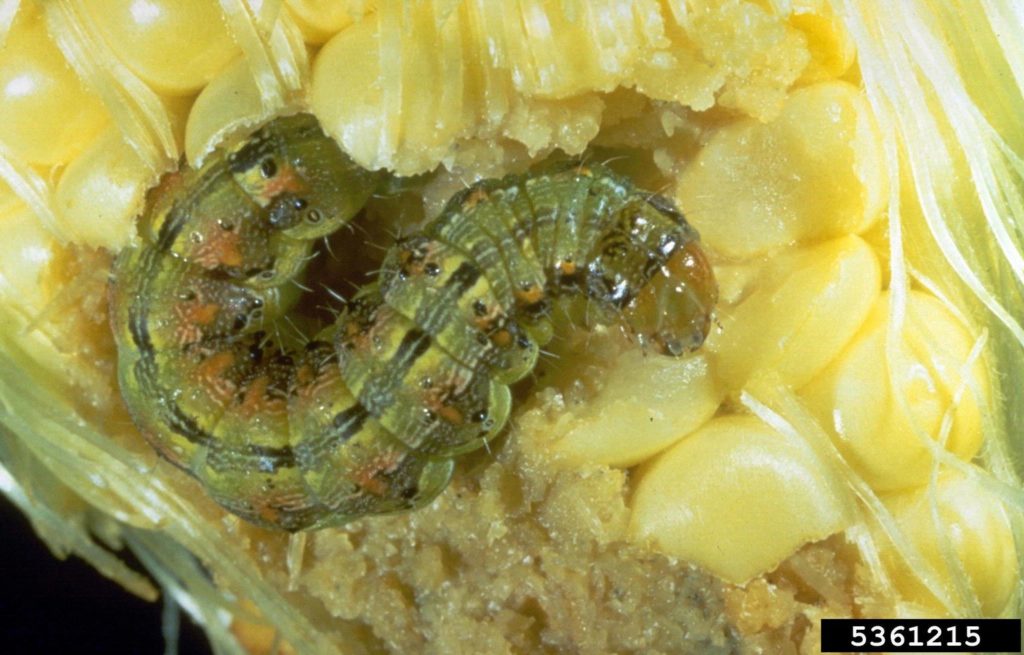Corn Earworm: June - August
Selecting a county that is colored in on the map will show a graph of this year’s catches at the site.
Corn Earworm isn't exclusive to corn. Other names for this species is tomato fruitworm and the cotton bollworm.
Corn Earworm, Helicoverpa zea, is a major pest in the southern US, and sweet corn is affected at a great number then field corn.
Although populations can die out during winter months, pupae can survive in soil. In areas where Corn Earworms migrate, two generations can live within one growing season. During the pollination stage, moths lay eggs on the silks of corn and after the larvae hatch, they will move to
the tip of the ear within the first hour. In most cases, only one larva will be found per ear as they are cannibalistic. When the larva is fully developed it will chew through husks and drop, burrow into soil, and pupate.
Damage caused by this pest can leave corn unmarketable by making ears look undesirable or cause more injury to the point it completely destroys crops.
The most effective form of management of Corn Earworm is planting resistant hybrid varieties and moving planting dates to avoid high-densities of corn earworms.

